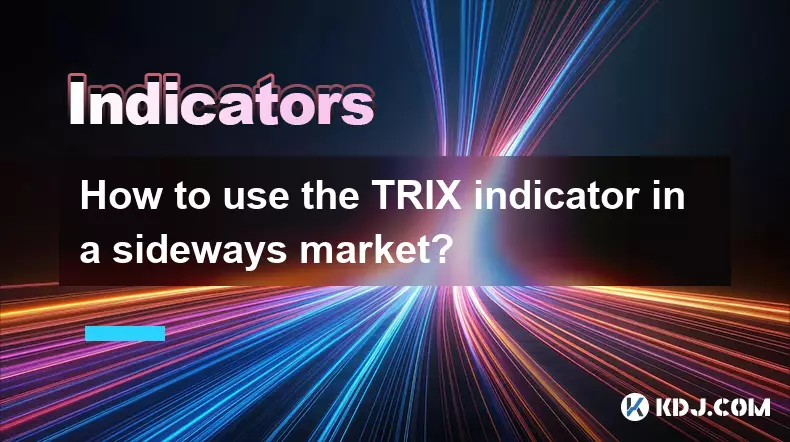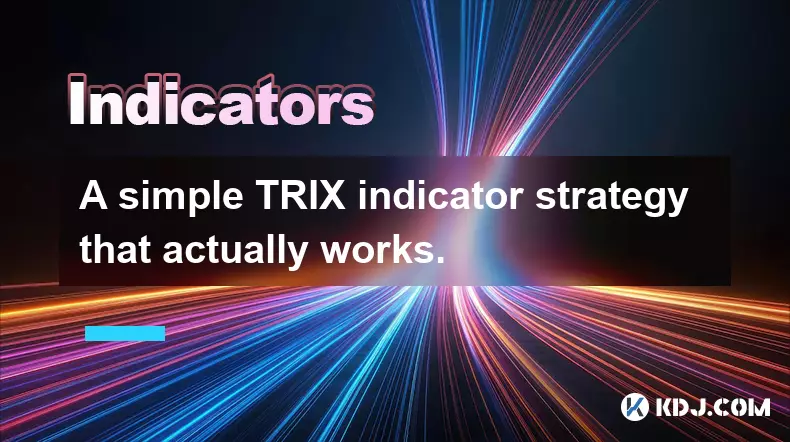-
 bitcoin
bitcoin $105968.894684 USD
4.17% -
 ethereum
ethereum $3639.320047 USD
7.62% -
 tether
tether $1.000339 USD
0.06% -
 xrp
xrp $2.407774 USD
5.96% -
 bnb
bnb $1011.704193 USD
2.28% -
 solana
solana $166.942754 USD
6.37% -
 usd-coin
usd-coin $1.000143 USD
0.03% -
 tron
tron $0.291515 USD
0.25% -
 dogecoin
dogecoin $0.181682 USD
4.06% -
 cardano
cardano $0.585450 USD
4.54% -
 hyperliquid
hyperliquid $42.099968 USD
5.20% -
 chainlink
chainlink $16.160745 USD
5.45% -
 zcash
zcash $645.269648 USD
12.96% -
 bitcoin-cash
bitcoin-cash $507.430338 USD
2.80% -
 stellar
stellar $0.290357 USD
3.69%
What is the KDJ indicator formula and how is it calculated?
The KDJ indicator enhances crypto trading by identifying overbought/oversold levels, crossovers, and divergences, with %K, %D, and %J lines offering nuanced momentum insights.
Nov 06, 2025 at 10:19 am

KDJ Indicator Overview and Its Role in Crypto Trading
The KDJ indicator is a momentum oscillator widely used in technical analysis, particularly within the cryptocurrency markets. It expands on the Stochastic Oscillator by incorporating a slowing component and an additional moving average to generate more refined signals. Traders rely on this tool to identify overbought and oversold conditions, potential trend reversals, and divergence patterns. The indicator consists of three lines: %K, %D, and %J. Each line plays a distinct role in interpreting price momentum relative to historical ranges.
Components and Calculation Steps of the KDJ Indicator
1. Calculate the %K line using the standard stochastic formula:%K = [(Current Close – Lowest Low) / (Highest High – Lowest Low)] × 100The lowest low and highest high are observed over a specified lookback period, typically 9 periods.
- Smooth the %K value to derive the %D line:%D is a moving average of %K, usually a 3-period simple moving average. This smoothing reduces noise and enhances signal reliability.
- Compute the %J line based on %K and %D:%J = (3 × %K) – (2 × %D)This line acts as a fast-moving trigger that often precedes shifts in %K and %D.
- Apply a slowing factor if needed:Some variations introduce a slowing period to %K before calculating %D, which further filters out short-term volatility.
- Plot all three lines on the chart:Traders analyze crossovers between %K and %D, extreme values near 80 or 20, and divergences from price action for trading cues.
Interpreting KDJ Signals in Volatile Crypto Markets
1. Identify overbought and oversold levels:When the %K line rises above 80, the asset may be overbought; when it drops below 20, it could be oversold. These thresholds help traders anticipate pullbacks or reversals.
- Monitor %K and %D crossovers:A bullish signal occurs when %K crosses above %D in the oversold zone. Conversely, a bearish signal forms when %K crosses below %D in overbought territory.
- Watch for divergence patterns:If price makes a new high but %K fails to surpass its previous peak, bearish divergence emerges—hinting at weakening momentum.
- Use %J for early warnings:Due to its sensitivity, %J can spike above 100 or plunge below 0, signaling extreme conditions before %K and %D react.
- Adjust parameters for different timeframes:Short-term traders might use a 5-period setting, while swing traders prefer 9 or 14 periods to align with market cycles.
Practical Applications of KDJ in Cryptocurrency Analysis
1. Detect reversal points during consolidation phases:In sideways Bitcoin price movements, KDJ readings dipping below 20 and rebounding suggest accumulation before upward breaks.
- Confirm breakout validity:When Ethereum surges past resistance with %K rising from below 20 to above 50, the breakout gains credibility through momentum alignment.
- Spot exhaustion in altcoin pumps:Rapid %J spikes beyond 100 during meme coin rallies often precede sharp corrections as speculative fervor peaks.
- Combine with volume indicators:A crossover in %K and %D supported by rising trading volume strengthens the likelihood of sustained directional movement.
- Avoid relying solely on KDJ in highly erratic markets:During flash crashes or news-driven spikes, the indicator may produce false signals due to lagging calculations and extreme volatility.
Frequently Asked Questions
How does the KDJ differ from the standard Stochastic Oscillator?The primary distinction lies in the inclusion of the %J line, which amplifies the difference between %K and %D. While the Stochastic typically uses only %K and %D, KDJ adds this third component to capture accelerated momentum shifts, making it more responsive in fast-moving crypto environments.
Can the KDJ indicator be applied to intraday cryptocurrency trading?Yes, many day traders apply KDJ on 15-minute or hourly charts to spot short-term entry and exit points. However, due to increased noise on lower timeframes, combining it with support/resistance levels or candlestick patterns improves accuracy.
What are common parameter settings for KDJ in crypto trading?The default configuration is 9,3,3—representing a 9-period lookback for %K, a 3-period moving average for %D, and a 3-period calculation for %J. Some traders modify these values depending on asset volatility and strategy duration.
Why might the KDJ give misleading signals in trending markets?In strong uptrends or downtrends, the indicator can remain in overbought or oversold zones for extended periods. Relying only on threshold levels without considering trend context may lead to premature contrarian trades.
Disclaimer:info@kdj.com
The information provided is not trading advice. kdj.com does not assume any responsibility for any investments made based on the information provided in this article. Cryptocurrencies are highly volatile and it is highly recommended that you invest with caution after thorough research!
If you believe that the content used on this website infringes your copyright, please contact us immediately (info@kdj.com) and we will delete it promptly.
- Bitcoin Price, JPMorgan, and the Crypto Moves You Need to Know
- 2025-11-10 22:50:02
- XRP ETFs in 2026: Will They Reshape the Crypto Landscape?
- 2025-11-10 22:50:02
- Decred Price Prediction: Navigating the Bull Market Buzz
- 2025-11-10 23:05:01
- Brett Coin, Crypto Presale, 1000X Prediction: What's the Hype?
- 2025-11-10 23:05:01
- Starknet (STRK) Price Surges: Decoding the Reasons Behind the Pump
- 2025-11-10 23:15:01
- YouBallin', Pre-sale, and Smart Contracts: What's the Haps?
- 2025-11-10 23:10:01
Related knowledge

What's the best way to learn the TRIX indicator?
Nov 10,2025 at 12:39pm
Understanding the Basics of the TRIX Indicator1. The TRIX (Triple Exponential Average) indicator is a momentum oscillator designed to filter out short...

How do professional traders use the TRIX indicator?
Nov 06,2025 at 04:40pm
Understanding the TRIX Indicator in Crypto TradingThe TRIX (Triple Exponential Average) indicator is a momentum oscillator used by professional trader...

Can I use the TRIX indicator on my mobile trading app?
Nov 07,2025 at 07:40pm
The TRIX indicator, a momentum oscillator designed to filter out short-term fluctuations and highlight long-term trends, has become increasingly popul...

How to use the TRIX indicator in a sideways market?
Nov 10,2025 at 03:00pm
Bitcoin’s Role in Decentralized Finance Evolution1. Bitcoin remains the cornerstone of decentralized finance, serving as both a store of value and a b...

How to code a simple TRIX indicator script in Pine Script?
Nov 07,2025 at 06:20am
How to Code a Simple TRIX Indicator in Pine Script The TRIX (Triple Exponential Moving Average) indicator is widely used in cryptocurrency trading to ...

A simple TRIX indicator strategy that actually works.
Nov 08,2025 at 05:39pm
Understanding the TRIX Indicator in Crypto Trading1. The TRIX (Triple Exponential Average) indicator is a momentum oscillator designed to filter out s...

What's the best way to learn the TRIX indicator?
Nov 10,2025 at 12:39pm
Understanding the Basics of the TRIX Indicator1. The TRIX (Triple Exponential Average) indicator is a momentum oscillator designed to filter out short...

How do professional traders use the TRIX indicator?
Nov 06,2025 at 04:40pm
Understanding the TRIX Indicator in Crypto TradingThe TRIX (Triple Exponential Average) indicator is a momentum oscillator used by professional trader...

Can I use the TRIX indicator on my mobile trading app?
Nov 07,2025 at 07:40pm
The TRIX indicator, a momentum oscillator designed to filter out short-term fluctuations and highlight long-term trends, has become increasingly popul...

How to use the TRIX indicator in a sideways market?
Nov 10,2025 at 03:00pm
Bitcoin’s Role in Decentralized Finance Evolution1. Bitcoin remains the cornerstone of decentralized finance, serving as both a store of value and a b...

How to code a simple TRIX indicator script in Pine Script?
Nov 07,2025 at 06:20am
How to Code a Simple TRIX Indicator in Pine Script The TRIX (Triple Exponential Moving Average) indicator is widely used in cryptocurrency trading to ...

A simple TRIX indicator strategy that actually works.
Nov 08,2025 at 05:39pm
Understanding the TRIX Indicator in Crypto Trading1. The TRIX (Triple Exponential Average) indicator is a momentum oscillator designed to filter out s...
See all articles























![🔥 Long awaited! The ancestor of Pi coin is about to take off? PI friends, come in and take a look! [Daily Coin Selection | Bitcoin Trend | Money Making Opportunities] 🔥 Long awaited! The ancestor of Pi coin is about to take off? PI friends, come in and take a look! [Daily Coin Selection | Bitcoin Trend | Money Making Opportunities]](/uploads/2025/11/10/cryptocurrencies-news/videos/6911e42f9bad7_image_500_375.webp)


















































